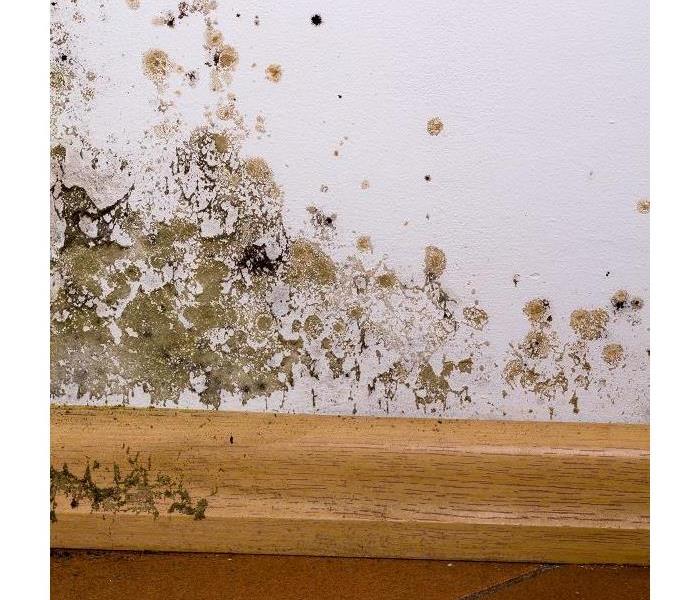Table of Content
You probably prefer your bedroom to be at the optimal temperature for you to get a good night’s rest. While using the AC and heating unit are fine , it’s possible for mold to grow in the vents. Generally speaking, your bedroom may not seem like a breeding ground for mold and, with properly controlled humidity, it may not be. However, all indoor spaces are susceptible to mold, so it’s worth checking for, just in case. 80% of the Vitamin C used in supplements comes from Aspergillus species, and others are used to make foods like the Japanese rice wine sake. However, many species produce asthma and allergy triggers along with carcinogenic toxins like aflatoxin.

If you suspect that mold spores are polluting your indoor air quality or making you sick, testing your environment should be at the top of your to-do list. Professional mold testing by qualified and experienced professionals is recommended. Depending on the severity of your black mold infestation, you can either clean it yourself or hire a professional.
If You Think Anthrax Is Hard To Identify
In warm climates, however, it is estimated that 20 percent of houses have dampness, and 25 percent have mold. Dampness is most likely to occur in overcrowded houses or those that lack appropriate ventilation, heating and insulation. Because symptoms of mold infection are similar to other respiratory ailments, they are often misdiagnosed. Mold growth, which often looks like spots, can be many different colors, and can smell musty. Any mold should be removed and the moisture source that helped it grow should be removed.
Some strains are known to trigger allergic reactions, making people feel difficulty in breathing, itchy eyes, sinuses, and even hay fever. Based on a study they conducted, some scientists even believe that having certain molds in your house can lead to the development of asthma in children. The same study goes further to claim that molds can also cause other big pulmonary issues in healthy individuals.
How do you tell if there’s mold behind walls?
Have you ever walked into a bathroom and wrinkled your nose because the space was so musty? It’s not news that damp quarters are prime breeding grounds for mold and mildew, fungi that help natural elements break down so that they can biodegrade. But while their presence might be vital to your compost pile, it’s unwelcome in homes and buildings. When fungi spores become airborne and are inhaled, your health can suffer.

While anthrax can appear like salt grains, raw sugar, or sand, there are 100,000+ types of mold spores, all of which are impossible for a homeowner to identify. Mold can be black, white, yellow, green, pink, all in a number of different shades or hues. Worse, the same mold can appear to have a different color depending on the situation. In fact, its often pointless to identify a specific mold spore.
You feel like you have a lingering cold or are battling flu-like symptoms.
According to the CDC, the most common indoor molds are Cladosporium, Penicillium, Aspergillus, and Alternaria. However, black mold, or Stachybotrys chartarum , is sometimes found in homes and other buildings. This greenish-black growth can grow on fiberboard, paper, dust, and lint, particularly in areas that may have recently flooded or suffered other types of water damage. While black mold can certainly look scary, the CDC says that Stachybotrys chartarum isn’t any more harmful than other types of mold.
Mold thrives on moisture, so pay particular attention to roofs, windows, pipes, basements, laundry areas, bathrooms, previously flooded spaces, and so on. Mold commonly appears on fibrous surfaces like drywall, upholstery, wallpaper, fabrics, and cardboard. If you suspect or fear toxic mold is growing in your home, you wont need any special tests. A test such as the viable test kit we learned about above will detect all kinds of molds present. By sending your petri dish to a lab, you can get a better idea of which types of molds that are growing and then take the correct actions. Common areas to test for black mold are basements, crawlspaces, bathrooms and kitchens where moisture and condensation may gather regularly.
Current studies have shown an increase in homes with mold due to problems with moisture inside the home. You will notice rapid growth in your house in areas like your bathroom or basement. Roofs with damage can also start leaking which attributes to a portion of the growth. Detecting it in the early stages will save you a lot of time and money you put into the repairs of your home, so consistent checks will be very beneficial for you.
Molds can also cause asthma attacks in people with asthma who are allergic to mold. In addition, mold exposure can irritate the eyes, skin, nose, throat, and lungs of both mold-allergic and non-allergic people. Symptoms other than the allergic and irritant types are not commonly reported as a result of inhaling mold. If you dont, you may not even be aware that there is mold in your home until you see it or smell it . Finding mold in your house is not always easy, but finding it is vital. Having mold spread throughout your home can cause health and financial burdens.
Black mold is especially dangerous to health, so be sure to identify any signs of it. Pay particular attention to any yellowing or fuzzy-looking growth on fabrics, Sheetrock, or any surface that may have been exposed to moisture. The health of both humans and pets may be affected by the presence of mold and mildew in the home.
Mold finds its target by releasing spores, which spread through the air. This is how it travels and how it can become dangerous to our respiratory health. When you breathe in these spores, you may notice a scent, but you can also experience mild to severe health symptoms from the spores. This is due to the release of allergens, irritants, and mycotoxins. Mold can spread and affect other areas of the walls, insulation, ceiling, flooring, studs, and joists. The longer you wait to remove the mold, the longer mold has to grow.
When clusters of mold spores grow on surfaces, they start to reproduce and become visible to the human eye. If you have mold allergies, asthma, or another lung condition, even breathing in the microscopic pores can trigger an attack. If you don’t, you may not even be aware that there is mold in your home until you see it or smell it . Mold is a type of fungus that may grow somewhere in the floors, ceilings, and walls of your home due to moisture trapped in these places. It can pollute the environment of your home and make you sick.

Mould can use multiple building materials, and even personal belongings, as food, including insulation, wood, clothing, and stored books and other items. Mould can grow when its exposed to moisture, so its important to eliminate plumbing leaks or storm damage as soon as they occur. There are countless species of mold, some of which are more harmful than others.
Problems Caused By Mold
When not in use, fireplaces and chimneys are cool, damp, and dark, making them magnetic to mold spores. And because the brick used to build most fireplaces is porous, the mold can spread quickly. Greenery in your home can be good for air purification but, if not monitored, can also cause mold to grow. Ensuring your home is at an optimal humidity level and that you don’t overwater your plants should be enough to prevent this. From meals in front of the TV to the household plants you use to keep the air fresh, the chance for mold growth is compounded with every element you add.
If you have allergies or asthma, youll likely experience more severe reactions such as asthma attacks or skin rashes. Near PlumbingKeep in mind that mold is a sign of excessive moisture and water intrusion and can be visible or hidden behind many different surfaces. Whether its from a leaking pipe or previous water damage, mold can lead to costly building repairs and even adverse health effects, which is why it should be handled promptly. In your bathrooms, for example, you can use a shower squeegee to remove excess water from shower walls and bathroom mirrors.

No comments:
Post a Comment